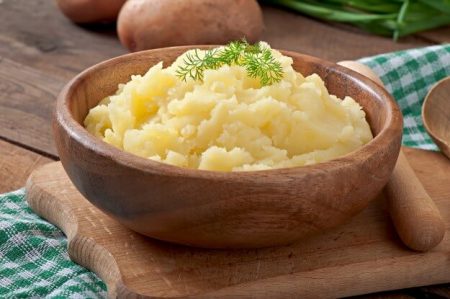Enjoy crispy Fried Crucian Carp with savory onions. A simple, flavorful dish perfect for a satisfying meal with minimal ingredients and maximum taste.
Fish contains a large number of fat-soluble vitamins A, C, D, E, and B vitamins, iodine, manganese, copper, and zinc.
A large amount of iodine in crucian carp. A fish-based diet is beneficial for pregnant women and children as it contains fish oil.
It is very beneficial for brain function and mental development, therefore it is recommended to eat fish at least once a week.
Directions
0/0 steps made- Cut the cleaned and gutted, well-washed fish with a knife along with the rib bones.
- Season each carcass with salt and pepper. Place a small piece of onion in the middle of each fish.
- Dip each fish in flour and place in boiling sunflower oil in a pan. Fry on both sides until golden brown, 10-15 minutes on each side.
- Remove the crucian carp from the pan and place the chopped onion in its place. Fry until golden brown.
- Place the crucian carp back in the pan and fry again on each side to soak in the onion aroma. Serve with vegetables.
How to Clean, Descale, and Gut a Fresh Fish:
Video by betterbooktv
More Facts About Crucian Carp
The crucian carp is a species of freshwater fish in the family Cyprinidae native to Europe and western Asia. It is one of the most common fish in Europe, occurring in most lakes and rivers, and is found sporadically in North America.
It is considered an easy-to-keep aquarium fish, although its natural habitat is in slow-flowing or standing water bodies, such as ponds, lakes, and rivers.
Despite its common name, the crucian carp is separate from the common carp and is related to the goldfish. It has been a popular food fish for centuries in many regions, particularly in Eastern Europe and Scandinavia.
Crucian carp is an important food fish, popular in Europe and the United States. It can be prepared in a variety of ways including baking, boiling, braising, frying, poaching, and stewing, and is often cooked in combination with vegetables, herbs, and spices.
History and Origin of Crucian Carp
In Europe, crucian carp has long been a part of traditional cuisine, appearing in dishes such as carp soup, carp salads, and Roman-style stews, as well as being served smoked or pickled.
In the US, carp is often used in fish fritters and fish cakes, as fish patties, as part of a fish pie, in fish burgers and fish tacos, as part of fish and chips, and in some fish chowders.
The origin of the name “crucian carp” is uncertain. It may have referred to the shape of the fish’s tail and the cross-like pattern on its back. It has also been suggested that the name is derived from the Latin words for fish and cross (“carissius crux”).
The carp has a long cultural and culinary history. In ancient times, it was believed to be a fish of luck, and it is referenced in various old Roman and Chinese texts.
It was popular as a dish among Mongolian, Russian, and Polish nobility. The earliest known recipes are from the 11th century when Chinese cookbooks featured recipes for the crucian carp.
In the 15th and 16th centuries, the crucian carp was especially popular in England, and the English cookbooks of the period featured numerous.





Recent comments